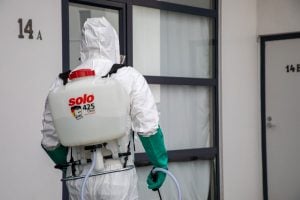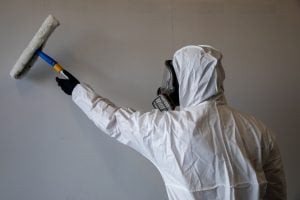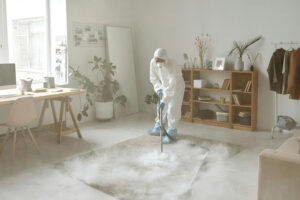Ensuring a healthy indoor environment is paramount for commercial properties, where the well-being of employees and visitors can significantly impact productivity and satisfaction. Indoor air quality (IAQ) plays a critical role in this context, with effective cleaning practices being key to maintaining a safe and pleasant atmosphere. This guide explores best practices in cleaning and maintaining indoor air quality, highlighting innovative strategies and solutions to common challenges faced by facility managers.
Understanding the Importance of Indoor Air Quality
Good indoor air quality is essential for a healthy working environment. Poor IAQ can lead to a range of health problems, from simple irritations like coughing and eye discomfort to more serious conditions such as asthma or even long-term respiratory issues. Enhancing IAQ through effective cleaning practices not only safeguards health but also boosts overall productivity and satisfaction.
Key Factors Affecting Indoor Air Quality
Best Practices for Enhancing Indoor Air Quality
Implementing strategic cleaning practices is crucial for maintaining optimal indoor air quality. Here are some effective strategies:
Use of Green Cleaning Products
- Non-toxic Cleaners: Opt for environmentally friendly cleaning products that don’t emit harmful chemicals.
- Microfiber Technology: Use microfiber cloths and mops to trap dust and particles more effectively than traditional materials.
Advanced Air Purification Techniques
- HEPA Filters: Utilise High-Efficiency Particulate Air (HEPA) filters in HVAC systems to capture fine particles.
- Air Purifiers: Deploy air purifiers in high-traffic areas or spaces prone to pollutants to further enhance air quality.
Regular Maintenance and Cleaning of HVAC Systems
- Routine Inspections: Ensure HVAC systems are inspected and cleaned regularly to prevent the circulation of dust and contaminants.
- Filter Replacement: Change filters frequently to maintain system efficiency and air cleanliness.
Enhancing Natural Ventilation
- Open Windows: Whenever possible, increase natural ventilation by opening windows to allow fresh air circulation.
- Indoor Plants: Incorporate indoor plants that can naturally purify the air, removing common pollutants.
Addressing Humidity and Moisture
Maintaining optimal humidity levels is crucial for preventing the growth of mould and mildew, which can significantly deteriorate indoor air quality.
- Dehumidifiers: Use dehumidifiers in damp areas to maintain healthy humidity levels.
- Spot Ventilation: Install exhaust fans in bathrooms and kitchens to remove excess moisture.
Implementing a Comprehensive Cleaning Schedule
- Daily Cleaning: Implement daily cleaning protocols for high-use areas to reduce dust and pollutants.
- Deep Cleaning: Schedule regular deep cleaning sessions to address areas that accumulate dust and debris over time.
Engaging Occupants in IAQ Improvement Efforts
- Awareness Programs: Educate building occupants about the importance of IAQ and their role in maintaining it.
- Feedback Mechanisms: Establish channels for occupants to report IAQ issues or concerns promptly.
Leveraging Technology for IAQ Monitoring
- Smart Sensors: Install smart sensors to monitor air quality parameters in real time, allowing for immediate adjustments.
- IAQ Dashboards: Use dashboards to track air quality trends and identify areas for improvement.
Maintaining high indoor air quality is a multifaceted challenge that requires a comprehensive approach to cleaning and facility management. By adopting green cleaning practices, ensuring proper ventilation, and leveraging technology for monitoring and improvement, facility managers can create healthier, more inviting environments. As awareness of the importance of IAQ grows, implementing these best practices becomes not just a matter of compliance, but a significant competitive advantage, contributing to the well-being of all building occupants.












